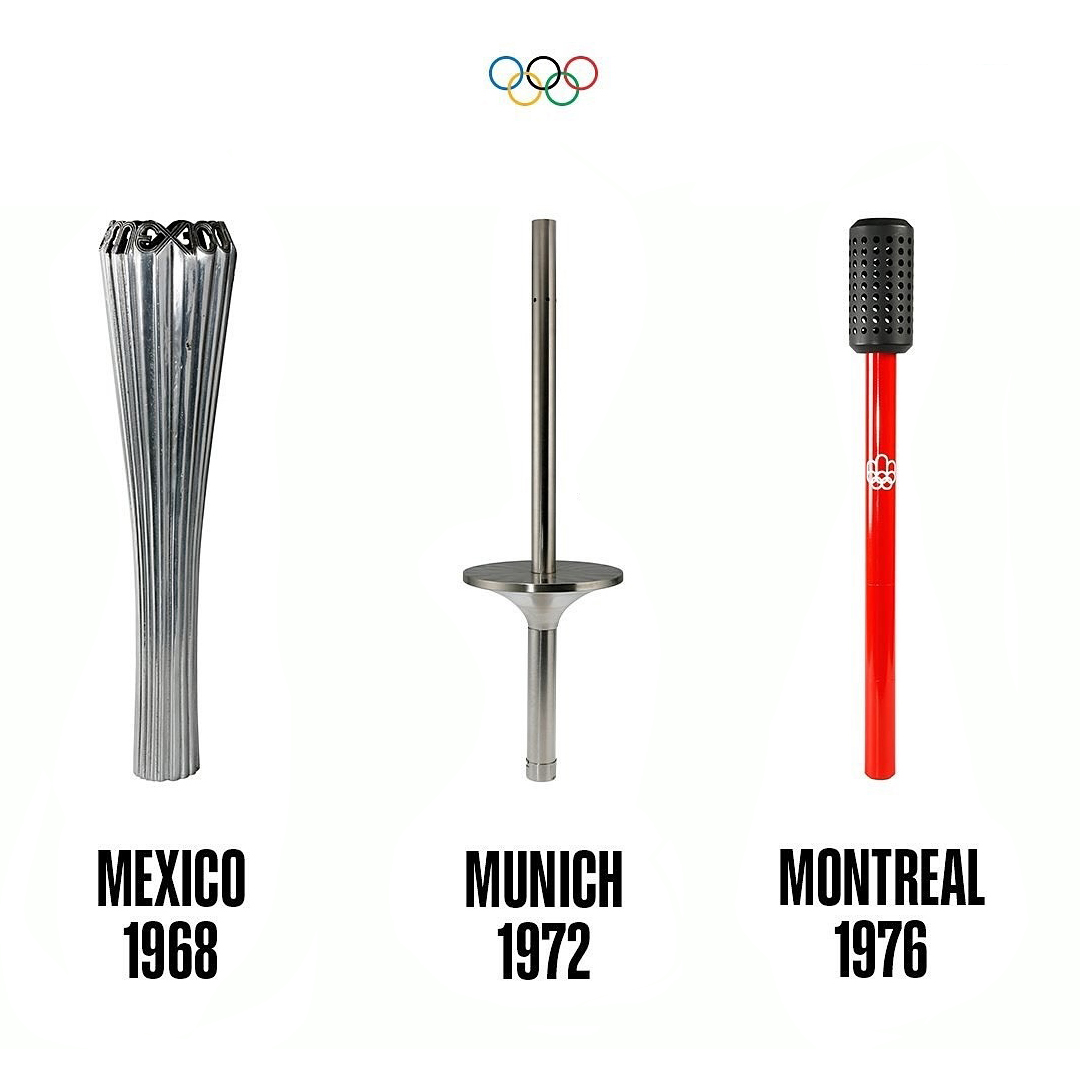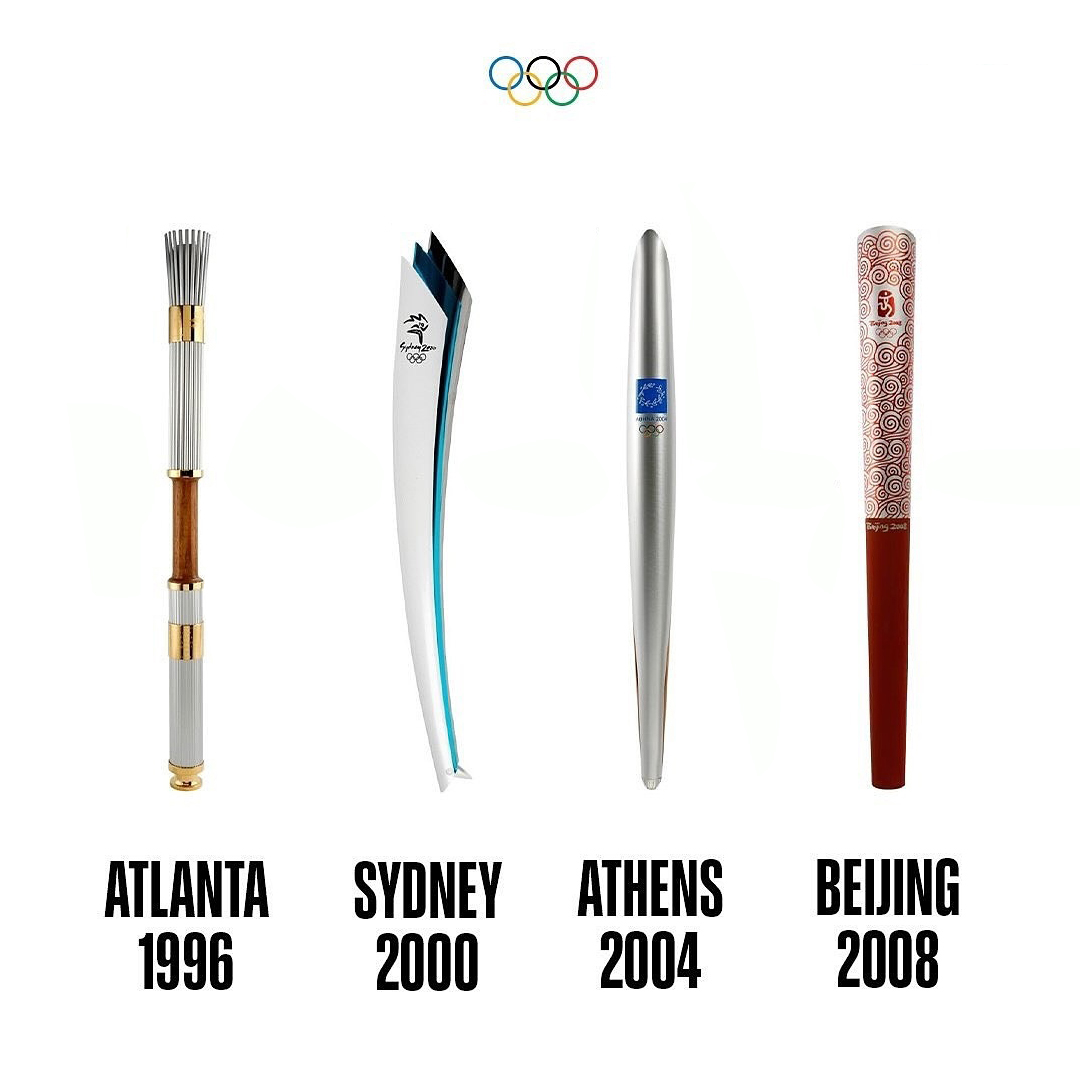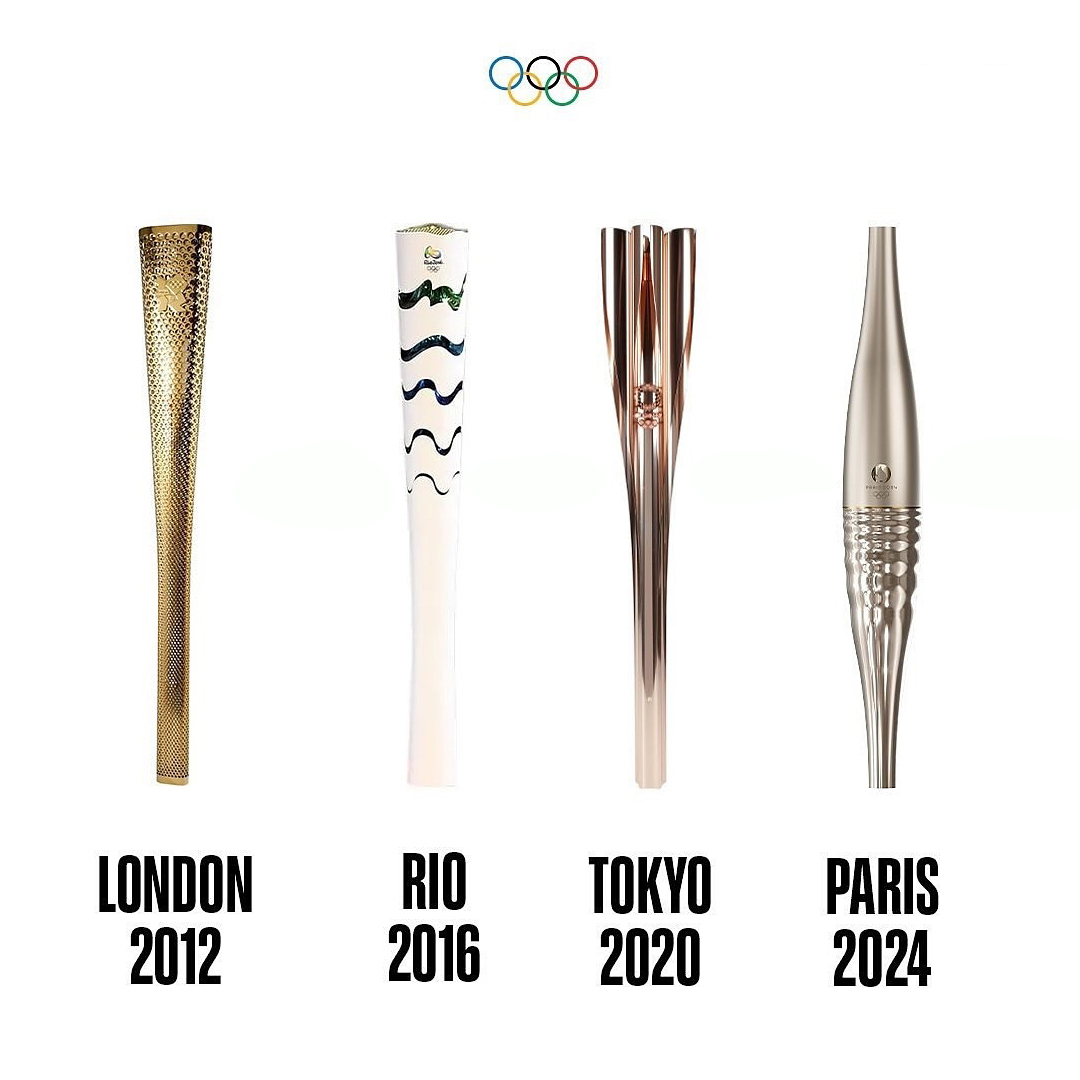photo: @p.roduct
The Olympic Torch is one of the most enduring symbols of the Olympic Games, representing peace, unity, and the enduring human spirit. Over the years, the design of the Olympic Torch has evolved, reflecting both the cultural heritage of the host country and the technological advancements of the time. Here’s a look at the different models of the Olympic Torch throughout the years and the stories they tell.
1936 Berlin Summer Olympics: The First Torch Relay
The tradition of the Olympic Torch relay began with the 1936 Berlin Olympics, where a simple, classical torch design was introduced. The torch was designed by Walter Lemcke and made of stainless steel. It featured a sleek, cylindrical shape with minimal decoration. This first relay covered over 3,000 kilometers from Olympia, Greece, to Berlin, and its design symbolized the beginning of a new Olympic tradition.
1948 London Summer Olympics: Resilience and Simplicity
After a 12-year hiatus due to World War II, the 1948 London Olympics marked the Games’ return with a torch that was understated and functional. Designed by Ralph Lavers, the torch was made from aluminum and was designed to be lightweight and durable. Its simplicity echoed the post-war austerity, but it also signified resilience and the world coming together once again.
1964 Tokyo Summer Olympics: Blending Tradition and Modernity
Japan’s first time hosting the Olympics brought a torch that merged traditional Japanese aesthetics with modern design. The torch, designed by Kenji Ekuan and Teruo Yamada, featured a chrysanthemum flower motif, symbolizing Japan’s imperial heritage. This torch represented the country’s journey from its historical roots to its post-war modernization and global reintegration.
1980 Moscow Summer Olympics: Industrial Elegance
The Moscow Games featured a torch that reflected the Soviet Union’s industrial prowess. Designed by Sergei Vasylyev and Vladimir Andreyev, the torch was constructed from aluminum and finished in a red and gold color scheme. It was elegant yet robust, designed to withstand harsh weather conditions, symbolizing the strength and resilience of the Soviet Union.
1992 Barcelona Summer Olympics: A Nod to Catalan Culture
The Barcelona torch was a tribute to the host region’s rich cultural heritage. Designed by André Ricard, the torch featured a sleek, minimalist design with a silver finish and ergonomic grip. The curved lines of the torch echoed the flowing shapes found in Catalan art and architecture, symbolizing the blend of tradition and modernity that characterized the Games.
2000 Sydney Summer Olympics: Inspired by Nature
The Sydney Olympics torch took inspiration from the natural beauty of Australia. Designed by Blue Sky Design (a team led by Gadi Michaeli and Michael Bryce), the torch was meant to resemble the fluidity of the Sydney Opera House and the waves of the ocean. Made of aluminum and stainless steel, the torch had an ergonomic design, with a sculpted wave-like surface that captured the spirit of the “Green Games” and Australia’s deep connection to its natural environment.
2004 Athens Summer Olympics: A Return to the Roots
The 2004 Athens Olympics torch was a homage to the original home of the Olympics. Designed by Andreas Varotsos, its design was inspired by an olive leaf, a symbol of peace and victory in ancient Greece. The torch was made from metal and wood, combining modern materials with traditional symbolism. Its design celebrated the return of the Games to their birthplace and the enduring legacy of the Olympic ideals.
2008 Beijing Summer Olympics: A Cultural Masterpiece
The torch for the Beijing Olympics, known as the “Cloud of Promise,” was a celebration of Chinese culture and history. Designed by Li Jianye, its design was inspired by traditional Chinese scrolls and featured intricate cloud patterns, symbolizing harmony and the auspicious nature of the Games. The torch was made from aluminum and had a red and silver color scheme, representing good fortune and prosperity.
2012 London Summer Olympics: Innovation and Design Excellence
The London 2012 torch was a design triumph, recognized for its innovative approach. Designed by Edward Barber and Jay Osgerby, the torch was made of aluminum alloy and perforated with 8,000 small holes, representing the 8,000 torchbearers who carried it. The torch’s triangular shape symbolized the three Olympic values: respect, excellence, and friendship. Lightweight and visually striking, the torch reflected London’s reputation as a global center of design and innovation.
2016 Rio de Janeiro Summer Olympics: Vibrant and Dynamic
The Rio torch was a vibrant celebration of Brazil’s culture and natural beauty. Designed by Chelles & Hayashi, its design featured a series of colored segments that expanded when the torch was lit, symbolizing the diversity of the Brazilian people and the landscape. The colors represented the sea, mountains, and the sun, with a special emphasis on the spirit of carnival. The torch’s dynamic design captured the energy and passion of the Rio Games.
2020 Tokyo Summer Olympics: Sakura Blossoms and Innovation
The torch for the Tokyo 2020 Olympics, which took place in 2021 due to the pandemic, was inspired by the Japanese cherry blossom, or sakura. Designed by Tokujin Yoshioka, the torch was made from recycled aluminum, including materials from temporary housing used after the 2011 earthquake and tsunami, symbolizing resilience and recovery. Its rose-gold color and flower-like shape celebrated Japan’s natural beauty and the theme of “Hope Lights Our Way.”
2024 Paris Summer Olympics: A Beacon of Elegance and Sustainability
The torch for the upcoming Paris 2024 Olympics, designed by Mathieu Lehanneur, promises to be a beacon of elegance and sustainability. Reflecting the artistic and cultural heritage of Paris, the design is expected to incorporate eco-friendly materials and technologies, continuing the trend of the Olympics as a platform for innovation and environmental consciousness.
The evolution of the Olympic Torch over the years reflects not only advances in design and technology but also the changing cultural, social, and environmental priorities of the host nations. Each torch tells a story, capturing the spirit of its time while carrying forward the timeless ideals of the Olympic Games.





